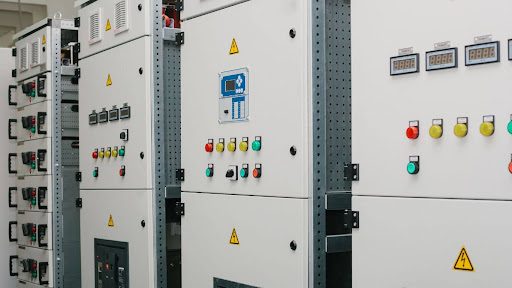Introduction
Humanity’s quest for artificial intelligence (AI) spans millennia, dating back to the ancient Greek myth of Talos, the bronze automaton crafted by Hephaestus. Today, AI transcends its former status as mere fiction; it is a tangible reality promising profound transformation.
Embracing AI in Low-Voltage Network Management
In the bustling operations control room, a person deftly navigates a touch screen amidst a network of screens adorned with graphical interfaces, emblematic of AI’s integration into low-voltage network management.
Breaking Barriers: AI’s Role in Grid Decarbonization
Generative artificial intelligence emerges as a pivotal tool in combating climate change and driving grid decarbonization efforts. Through systematic analysis of vast datasets encompassing emissions, weather patterns, population trends, and low-voltage power network efficiency, AI optimizes energy generation, distribution, and consumption. Its predictive capabilities extend to equipment failures, load forecasts, fault detection, and seamless integration of renewable energy sources, empowering stakeholders with comprehensive data insights.
AI’s Ascendancy in LV Network Management
The integration of AI into low-voltage (LV) network management marks a seismic shift in our approach to energy systems. Machine learning has evolved from rudimentary rule-based systems to sophisticated dynamic modeling frameworks. This evolution follows a clear trajectory, from rule establishment to regression analysis, mathematical grid modeling, and the culmination in generative AI systems that continually adapt and learn.
Anticipating Tomorrow’s Consumer Behavior
The evolving landscape of consumer behavior, driven by increased renewable energy adoption, electrification, and the rise of electric vehicles and energy storage, heralds a paradigm shift in consumer energy participation. Digitized low-voltage networks generate vast data streams poised to reshape consumer decisions. Generative AI harnesses these datasets to provide dynamic insights, empowering prosumers to actively participate in grid efficiency, stability, and decarbonization.
Accountability in the AI Era
While generative AI holds immense potential for automating decision-making in critical infrastructure, it also raises pertinent questions about regulation and accountability. Who bears responsibility for the decisions made by an AI system? The manufacturer, the system operator, or the AI itself? These questions, echoing debates surrounding autonomous transportation, necessitate robust frameworks to ensure the safety and reliability of energy systems.
Contributing to a Sustainable Future
AI’s analytical prowess facilitates progress towards net-zero objectives by predicting energy demand, optimizing distribution, and reducing waste. Moreover, it bolsters the reliability and resilience of low-voltage electrical networks, integrating renewable energy sources and forecasting consumer behavior. As environmental awareness grows, catalyzing new consumer behaviors, AI emerges as the linchpin of sustainable energy ecosystems.
A Practical Application of AI
In the dynamic energy landscape, the ability to share accurate network representations across stakeholders is paramount. We leverage AI to validate data quality and topology model accuracy, streamlining grid digitization efforts and reducing labor-intensive tasks.
The Road Ahead
Beyond mere automation and efficiency enhancements, AI integration promises to redefine energy production, distribution, and consumption paradigms. It is not merely an add-on but a fundamental component of the future energy landscape. As we navigate the journey ahead, leveraging AI’s adaptive capabilities to achieve efficiency, sustainability, and resilience is paramount.
In conclusion, the road ahead is marked by enlightenment, disruption, and the promise of sustainable energy ecosystems. Failure to recognize the significance of AI or delay its adoption risks obsolescence in this transformative journey.








